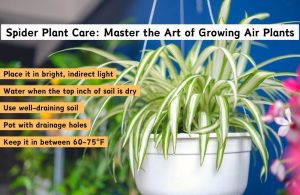This article covers the following areas –
- The Light Requirements of Maranta Plants
- Temperature and Humidity Needs of Maranta
- Watering Maranta
- Feeding Your Maranta: A Balanced Diet for Healthy Growth
- Potting and Repotting: Giving Your Maranta Room to Grow
- Pruning and Propagation: Enhancing Growth and Spreading the Love
- Common Problems and Solutions of Maranta
- Final Words
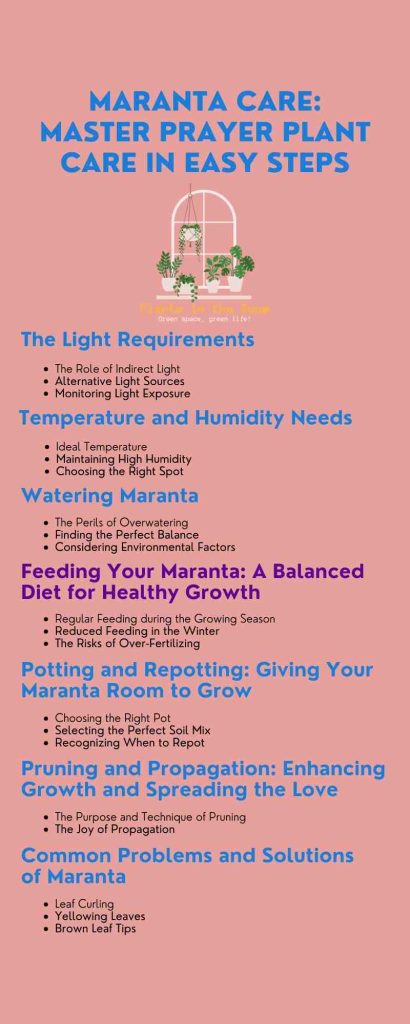
When I first encountered the Maranta plant, commonly known as the prayer plant, I was smitten by its beauty and charm. This tropical plant has stunning, patterned leaves that fold up at night, like hands in prayer. As much as I was intrigued by this plant, I knew it required much more care than the average houseplant. So, let me share my journey and help you care for your own Maranta with ease.
Maranta, also known as the Prayer Plant, requires indirect sunlight, humidity levels between 50-60%, and soil kept consistently moist but not waterlogged. Regular feeding during the growing season and appropriate potting can support healthy growth.
Maranta plants’ needs can vary based on specific conditions. Keep reading to understand better its light requirements, ideal temperature and humidity levels, watering routine, feeding needs, potting requirements, and propagation methods. The article also covers common problems and how to address them.
The Light Requirements of Maranta Plants
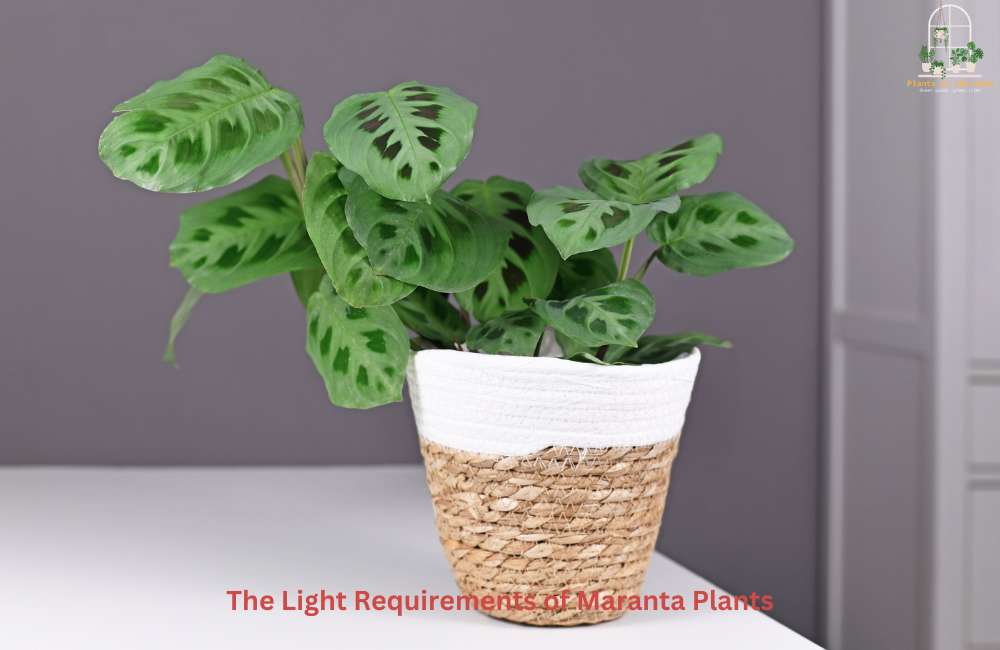
When I began my journey with Maranta plants, one of the first aspects of their care I had to understand was their lighting requirements. Just like every other houseplant, Marantas have unique light preferences, heavily influenced by their natural habitat.
Originating from the understories of tropical rainforests in Brazil, Marantas are accustomed to an environment where they’re shielded from direct sunlight by tall trees and vegetation. As indoor plants, replicating this light condition is crucial for their survival and growth.
The Role of Indirect Light
One of the key things I learned about Maranta plants is that they aren’t sun worshippers. Instead, they flourish in spaces filled with bright yet indirect light. This unique light preference comes from their natural rainforest habitat, where sunlight filters through dense foliage, providing them with diffused light throughout the day.
When I first got my Maranta, I put this knowledge into practice by placing it near a north-facing window, a location known for its constant yet gentle light. But if you don’t have a north-facing window, don’t worry. You have other options.
Alternative Light Sources
If a north-facing window isn’t available, you can place your Maranta in an area with filtered sunlight throughout the day. A spot near an east or west-facing window covered with sheer curtains can create a similar effect. Alternatively, placing it a few feet away from a south-facing window can provide the necessary light conditions.
If natural light is scarce in your home, don’t fret. You can use fluorescent lights as an alternative light source. Try to place the plant about a foot below the light source and keep the light on for approximately 12 hours a day.
Monitoring Light Exposure
While ensuring that your Maranta gets enough light is vital, preventing it from getting too much light is equally important. The leaves of your Maranta can give you signs about its light conditions. If the vibrant leaf patterns start to fade, it could indicate that the plant receives too much direct sunlight. On the other hand, if the plant becomes leggy and the new leaves are smaller than usual, it might be a sign of insufficient light.
Understanding the light requirements of Maranta and tailoring your plant’s conditions to match these needs is key to ensuring its healthy growth. This might require a bit of trial and error at first, but with careful observation and patience, you’ll be able to find the perfect spot for your Maranta in no time.
Temperature and Humidity Needs of Maranta
Moving onto another crucial element of Maranta care, let’s delve into these unique plants’ temperature and humidity needs. I learned early on that because Marantas hail from tropical rainforests, they are accustomed to warm temperatures and high humidity. To keep them healthy and happy, I had to mimic those conditions as closely as possible in my home.
Ideal Temperature for Maranta
Marantas, like most tropical plants, prefer warm temperatures. I found that keeping the temperature between 65-80°F (18-27°C) was ideal for plant growth. Lower temperatures can lead to slowed growth and potential harm to the plant, especially if the temperature drops below 60°F (15°C).
As part of my plant care routine, I closely monitor the temperature, particularly during the winter when indoor temperatures fluctuate. I ensure to keep my Maranta away from drafty windows or doors and from heating or cooling vents, which can create sudden temperature changes.
Maintaining High Humidity
In addition to warm temperatures, Maranta plants thrive in high humidity, which I had to consider in my plant care routine. I used a simple method: misting the leaves with a spray bottle daily. This provided a decent humidity level, but as I became more invested in the plant’s well-being, I introduced a humidifier into the mix to maintain consistent humidity.
However, other methods exist to increase humidity around your Maranta if a humidifier isn’t an option. You can place the plant on a tray filled with pebbles and a little water, ensuring the pot’s bottom isn’t touching the water. The water will evaporate around the plant, providing it with the extra humidity it craves.
Choosing the Right Spot
Considering the humidity requirements of Maranta, choosing the right location in your home is crucial. High-humidity areas such as bathrooms or kitchens can be ideal spots for your Maranta. These spaces typically have more moisture in the air due to the steam from hot showers or cooking. Just ensure that the space also meets the light and temperature requirements for the plant.
Managing the temperature and humidity needs of your Maranta might seem like a challenging task, but once you understand these requirements, it becomes an essential and straightforward part of your plant care routine. With these steps, your Maranta will continue to thrive and grow, becoming a stunning addition to your indoor garden.
Watering Maranta
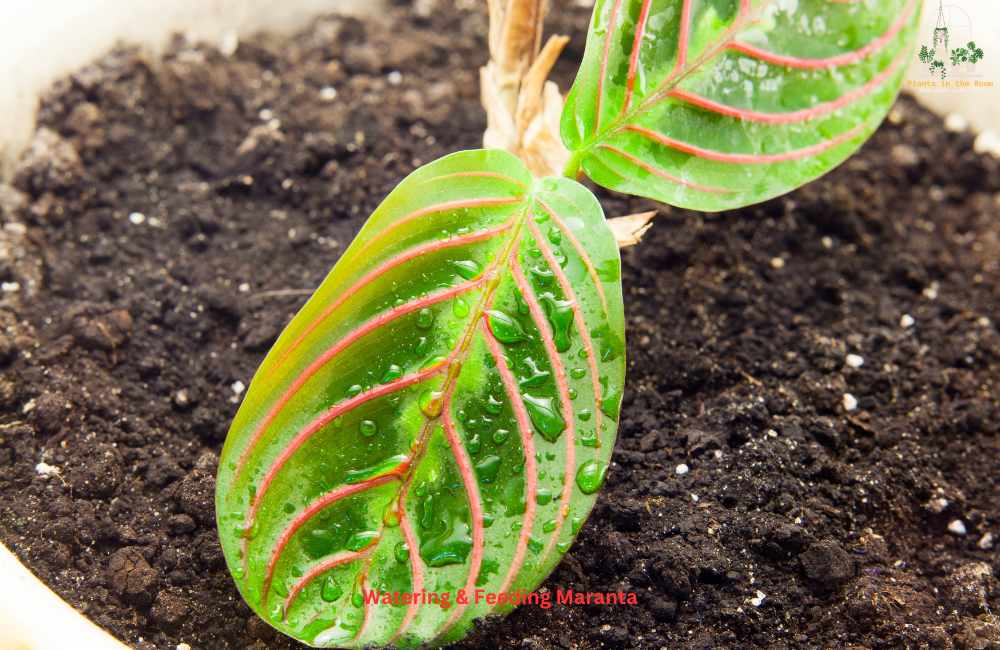
Watering is one of the most critical aspects of plant care, and Marantas are no exception. They can be quite particular when it comes to their watering needs. Through my journey with Maranta, I’ve realized that giving the right amount of water can mean the difference between a thriving plant and one that’s struggling to survive. It’s all about maintaining a balance and avoiding extremes. Let’s dive into the details of watering Maranta plants.
The Perils of Overwatering
I learned early on that Marantas, like many houseplants, are susceptible to overwatering. Understanding that these tropical beauties don’t like their roots to sit in water is essential. Overwatering can lead to root rot, a common issue that can cause serious damage to your Maranta. It’s a condition that manifests itself with yellowing leaves and a generally unhealthy-looking plant.
Finding the Perfect Balance
So, how much water does a Maranta need? It likes consistent moisture but detests being waterlogged. In other words, the soil should be kept damp but never soaking wet. Finding this balance might sound difficult, but with a simple trick, it’s not hard at all.
I learned to check the top inch of the soil before each watering. I would stick my finger into the soil up to my first knuckle, and if it felt dry, it was time to water. If it was still damp, I knew I had to wait for a day or two more. This simple check was a reliable method to ensure my Maranta got just the right amount of water.
Considering Environmental Factors
Watering frequency also depends on several factors, such as light, temperature, and humidity levels. During warmer months or if the plant is in a brighter location, it may require more frequent watering as the water evaporates faster. Conversely, during cooler months, the plant’s water requirements decrease.
With a little patience and careful observation, mastering the art of watering Maranta is completely achievable. It’s a process of understanding and catering to the plant’s unique needs. Remember, it’s always better to err on the side of underwatering than overwatering. Once you get a hang of it, you’ll find that this delicate balance isn’t as tricky as it first seems.
Feeding Your Maranta: A Balanced Diet for Healthy Growth
Just as we need a balanced diet to stay healthy, plants require proper feeding to grow and thrive. And Maranta plants are no different. While they are not heavy feeders, providing them with the right amount of nutrients can enhance their growth and ensure their long-term health. Here’s how I went about feeding my Maranta.
Regular Feeding during the Growing Season
The feeding requirements for Maranta plants vary with the seasons. They have a particular growing season, typically from spring to early fall, during which they are more active and can absorb nutrients more efficiently.
During this period, I fed my Maranta with a balanced houseplant fertilizer once a month. I found that a liquid fertilizer diluted to half the recommended strength worked best. This feeding schedule provided my Maranta with the essential nutrients it needed without the risk of over-fertilizing.
Reduced Feeding in the Winter
Once winter rolled around, I noticed my Maranta’s growth slowed significantly. This is normal, as Maranta, like many plants, enters a rest period during the colder months. As the plant’s activity decreases, so do its nutrient requirements.
During this time, I reduced the feeding schedule to once every six weeks. This way, I was still providing my Maranta with essential nutrients but at a rate more suited to its slowed growth.
The Risks of Over-Fertilizing
Over-fertilizing can be detrimental to Maranta plants, causing damage to their roots and possibly leading to leaf burn. If you notice signs of over-fertilizing, such as yellowing leaves or a white crust on the soil surface, reduce the feeding frequency or consider flushing the soil with water to remove excess nutrients.
Feeding your Maranta might seem like a small task, but it’s crucial in supporting the plant’s overall growth and health. By understanding and meeting its feeding needs, you’ll be well on your way to having a lush, thriving Maranta in your home.
Potting and Repotting: Giving Your Maranta Room to Grow
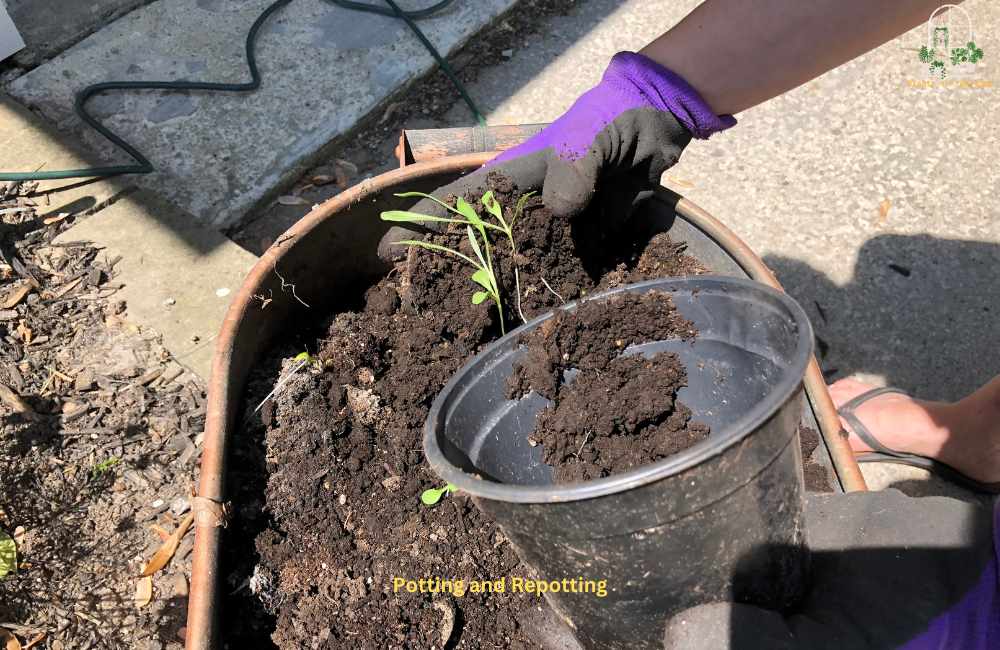
Potting is one of the first steps in your Maranta care journey, and repotting becomes necessary as your plant grows. Over time, I learned that the right pot and repotting techniques can greatly affect my Maranta’s overall health and development. Here’s how I navigated through the potting and repotting process.
Choosing the Right Pot
When I first got my Maranta, I knew I needed to provide it with a pot to support its growth and cater to its needs. What I found was that a pot with good drainage was crucial. This is because Marantas, like most houseplants, are susceptible to root rot, and excess water sitting at the bottom of the pot can quickly lead to this problem.
In addition to good drainage, the size of the pot also matters. I started with a pot that was big enough to fit the plant comfortably and its root ball, giving it room to grow but not so much that the soil would stay wet for too long.
Selecting the Perfect Soil Mix
Marantas prefer a well-draining potting mix that can hold enough moisture without becoming waterlogged. I found that a mix of peat-based potting soil and perlite worked great. The peat retains moisture, while the perlite aids in drainage, preventing the soil from becoming too soggy.
Recognizing When to Repot
Repotting Maranta was an important task I had to learn. While these plants don’t have to be repotted very often, it becomes necessary once every 12-18 months or so, usually during the spring when the plant grows.
But how do you know when it’s time to repot? There are a few tell-tale signs that your Maranta is outgrowing its current pot. When I saw the roots starting to grow out of the drainage holes or wrapping around the inside of the pot, I knew it was time to move my Maranta to a larger home.
Repotting can be a bit stressful for the plant, so it’s important to do it gently and only when necessary. However, with the right pot, the proper soil mix, and a careful approach, repotting your Maranta can give it the room it needs to continue growing and thriving.
Pruning and Propagation: Enhancing Growth and Spreading the Love
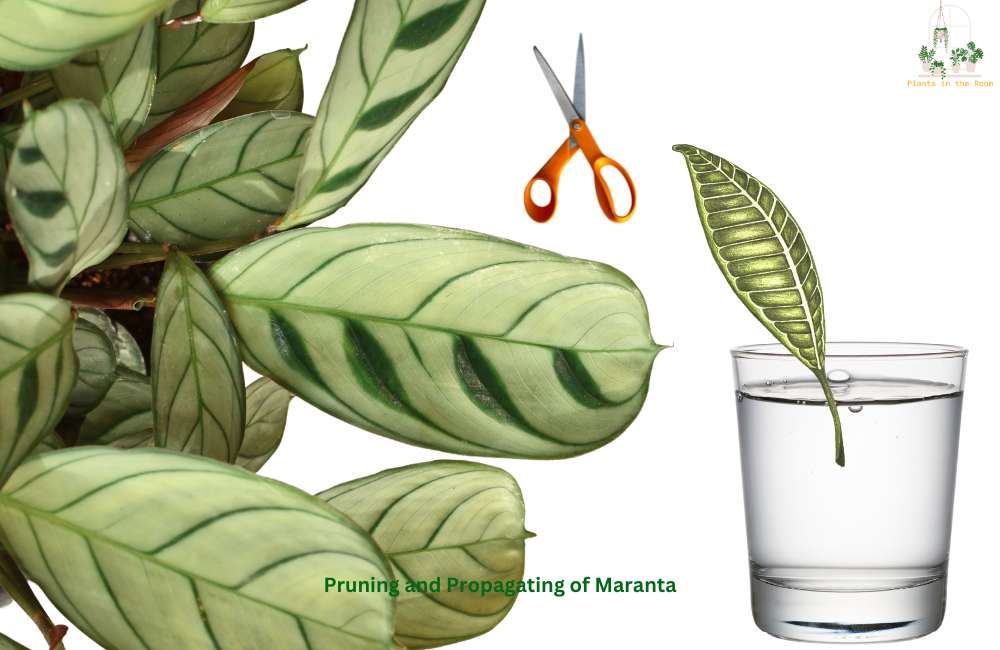
As my journey with Maranta continued, I found that the tasks of pruning and propagation played vital roles in maintaining the health of my plant and allowing me to share my love for Marantas with others. Pruning helped keep my plant in shape and encouraged new growth, while propagation allowed me to multiply my Maranta collection. Let’s delve into how I managed these two essential aspects of Maranta care.
The Purpose and Technique of Pruning
Pruning your Maranta might seem small, but it can significantly influence the plant’s overall health and appearance. Pruning helps maintain the plant’s shape, remove dead or dying leaves, and encourage new growth.
In my experience, I found that the best way to prune my Maranta was by cutting off yellow or brown leaves at the base. This approach kept the plant healthy and vibrant, allowing more energy toward new growth.
Remember, when you prune, use clean, sharp scissors or pruning shears to avoid damaging the plant or spreading diseases.
The Joy of Propagation
If you’re like me and you fall in love with your Maranta, you might want to consider propagation. It’s a fantastic way to expand your collection of Marantas or share these beautiful plants with friends and family.
The propagation process for Marantas is surprisingly simple. I started by choosing a few healthy leaves from my plant, ensuring they had roots attached. I then placed these cuttings in a glass of water, ensuring the roots were submerged, but the leaf was not.
After a few weeks, I started noticing a new root system developing. Once the roots were a couple of inches long, I transferred the new plants to potting soil, and voila, I had a new Maranta plant!
Pruning and propagation are just two more steps in your Maranta care journey, but they are vital. Not only do they help maintain and enhance the growth of your existing plant, but they also provide a fantastic way for you to expand your indoor garden or share your love for these tropical beauties with others.
Common Problems and Solutions of Maranta
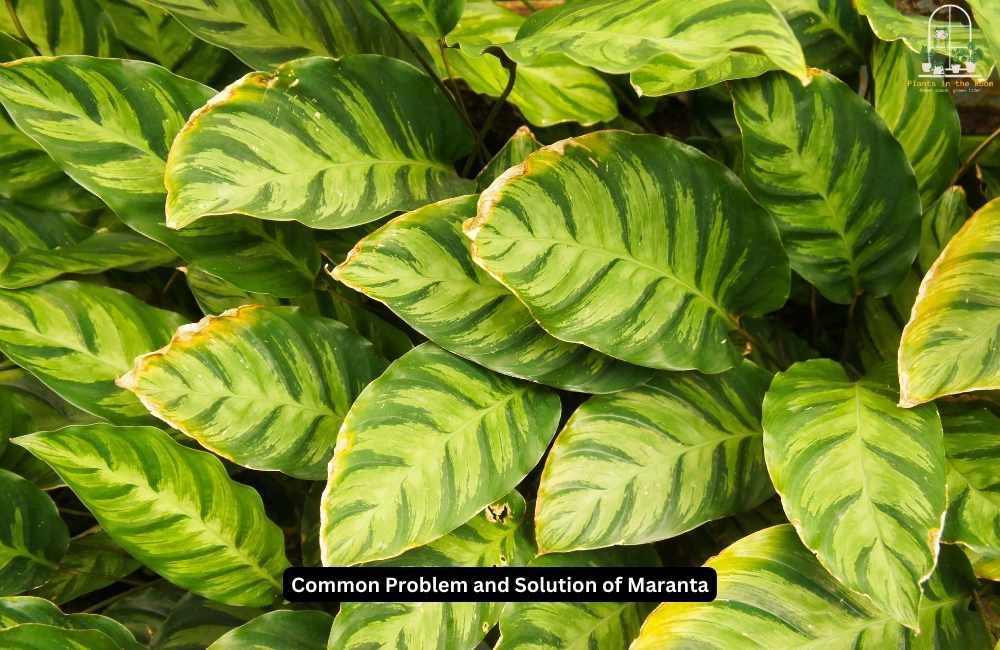
Just like us, plants can experience a range of health issues. Throughout my journey with Maranta, I encountered some problems that initially worried me. However, I soon realized these were common issues many Maranta owners face. I successfully navigated these challenges by observing my plant closely and responding to its needs. Let’s delve into some of the issues you might encounter and how to address them.
Leaf Curling
One morning, I noticed that the leaves of my Maranta were curling, which was out of the ordinary. After some research, I discovered that leaf curling can indicate under-watering or low humidity. Marantas come from tropical rainforests where the humidity levels are high. They may respond by curling their leaves when they don’t receive enough moisture.
I increased the misting frequency to address this issue and moistened the soil. It took a bit of adjustment, but soon, my Maranta looked much happier, and the leaves uncurled.
Yellowing Leaves
Another issue I faced was yellowing leaves. It was disheartening to see the vibrant green leaves turn yellow. Yellowing leaves in Maranta can be a sign of overwatering or poor drainage.
Overwatering is a common problem in indoor plant care, and Marantas are especially sensitive to it. It can lead to root rot, which in turn causes the leaves to yellow and the plant to wilt. To tackle this problem, I only watered my Maranta when the soil’s top inch felt dry, ensuring I wasn’t overwatering.
Moreover, I double-checked that my plant’s pot had sufficient drainage. A pot with good drainage is crucial as it allows excess water to escape, preventing the soil from becoming waterlogged.
Brown Leaf Tips
Over time, I also noticed that the tips of some leaves were turning brown. After researching, I learned this could be due to several factors, including low humidity, over-fertilization, or even tap water filled with chemicals.
To address this issue, I tried to increase the humidity around my plant, cut back on fertilizing, and started using filtered or rainwater for watering. It took a little time, but eventually, I started seeing improvement.
Understanding and dealing with these common problems are part of the Maranta care journey. Remembering that plants communicate their needs through subtle signs like leaf curling, yellowing, or browning is essential. By observing these signs and responding appropriately, you can ensure your Maranta continues to thrive.
Final Words
Taking care of a Maranta plant might sound a bit challenging, but trust me, the reward is worth it. Watching your Maranta thrive under your care brings a unique sense of joy and satisfaction. And let’s not forget the beauty it adds to your home with its vibrant leaves and peculiar prayer-like movements.
So, now that you know all the ins and outs of Maranta care, it’s time to bring this beautiful tropical plant into your home. With just a bit of effort and attention, you can master the art of Maranta care and have a lovely, thriving plant that will surely catch everyone’s eye.
Happy planting!




